“This post contains affiliate links, and I will be compensated if you make a purchase after clicking on my links.”
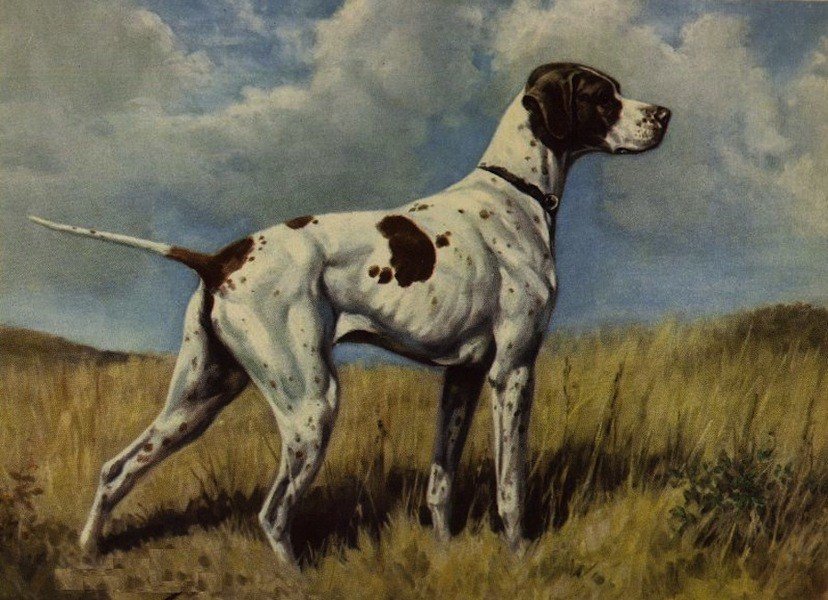
While the exact number of dog breeds throughout the world is unknown, the World Canine Organization compiled a registry of all internationally accepted dog breeds. To date, that list contains 339 different breeds. Wow!
But, that list does not include the dozens of recognized breeds that no longer exist. Either through breeding these dogs into an entirely new breed altogether, or through lack of interest in maintaining them, here are 25 dogs that no longer grace the globe. A vast majority, however, live on as ancestors to many favorite modern breeds.
English White Terrier
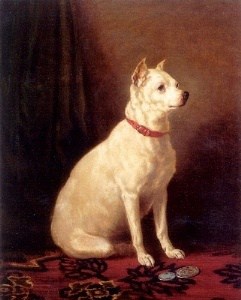
The English white terrier (also known as the White English terrier or Old English terrier) is an extinct breed of dog. The English White terrier is the failed show ring name of a pricked-ear version of the white fox-working terriers that have existed in the U.K. since the late 18th Century.
The name “English white terrier” was invented and embraced in the early 1860s by a handful of breeders anxious to create a new breed from a prick-eared version of the small white working terriers that were later developed into the Fox terrier, the Jack Russell terrier, the Sealyham terrier and later in America – the Boston Terrier and the Rat terrier. In the end, however, the Kennel Club hierarchy decided the “English white terrier” was a distinction without a difference, while the dog’s genetic problems made it unpopular with the public. Within 30 years of appearing on the Kennel Club scene, the English white terrier had slipped into extinction. It was, however, crossbred with the Old English Bulldog giving rise to the Boston terrier and Bull terrier.
North Country Beagle
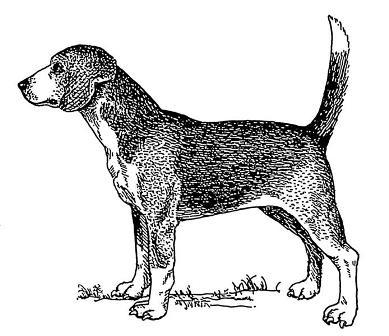
The North Country Beagle, Northern Hound or Northern Beagle was a breed of dog that existed in Britain probably until early in the 19th century. The exact date of its extinction is not known; it is likely that it was gradually interbred with other breeds, particularly the modern Beagle, until the genuine North Country Beagle bloodline ceased to exist.
In The British Encyclopedia of 1809, William Nicholson says that the North Country Beagle was kept by the “dashing class of sportsman” because it could “run down a brace [of hare] before dinner”, but although a good scent hound, was probably lacking in this ability when compared to the delicate nose of the Southern Hound.
Bullenbeisser
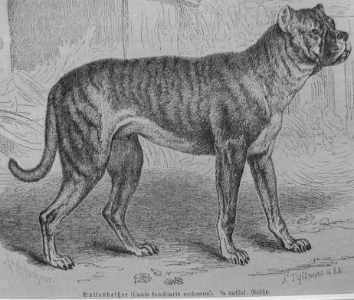
The Bullenbeisser (also known as the German Bulldog) was a breed of dog known for its strength and agility. The breed was closely related to the Bärenbeisser (some believe that the two breeds were the same; the names mean “bull-biter” and “bear-biter,” respectively), and the Boxer. It was in all its aspects similar to the present Alano Español and very alike to the Dogo Argentino, not only in aspect, but also in usage.
The Bullenbeisser became extinct by crossbreeding rather than by a decadence of the breed. In the late 1870s, German breeders Roberth, Konig, and Hopner used the dog to create a new breed, today called the Boxer.
Blue Paul Terrier
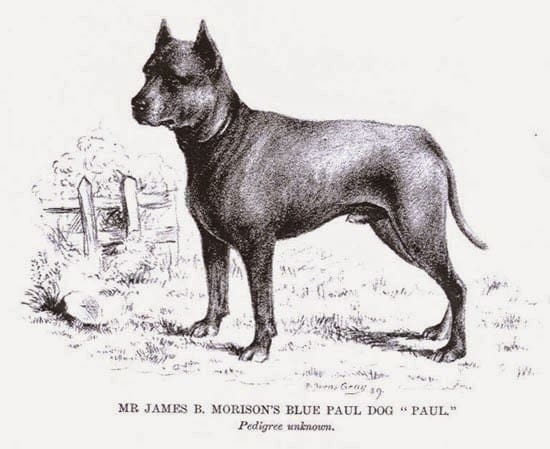
No one seems to have full knowledge as to how the Blue Pauls were bred or from where they originally came. There was a story that Paul Jones, the pirate, brought them from abroad and landed some when he visited his native town of Kirkcudbright about 1770. The gypsies around the Kirkintilloch district kept Blue Pauls, which they fought for their own amusement. They were game to the death and could suffer much punishment. They were expert and tricky in their fighting tactics, which made them great favorites with those who indulged in this sport. They maintained that the breed originally came from the Galloway coast, which lends support to the Paul Jones legend.
The first dogs to arrive in the United States with the English immigrants in the mid-19th century were the Blue Paul Terrier and the Staffordshire Bull Terrier.
Turnspit Dog
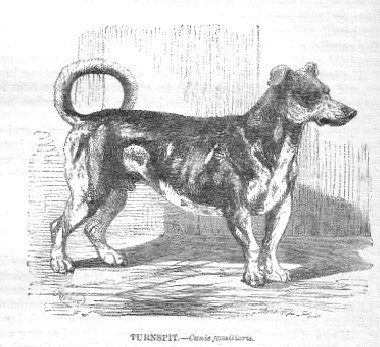
Turnspit Dog: The Turnspit Dog was a short-legged, long-bodied dog bred to run on a wheel, called a turnspit or dog wheel, to turn meat so that it would cook evenly. The dogs were also taken to church to serve as foot warmers. One story says that during service at a church in Bath, the Bishop of Gloucester gave a sermon and uttered the line “It was then that Ezekiel saw the wheel…”. At the mention of the word “wheel” several turnspit dogs, who had been brought to church as foot warmers, ran for the door.
Alpine Mastiff
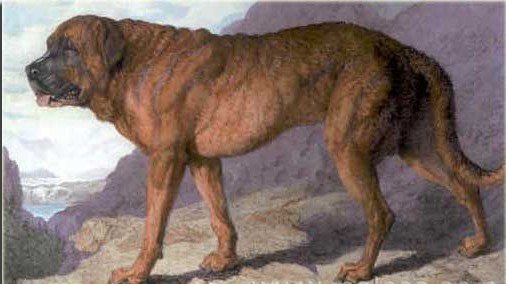
Alpine Mastiff: An ancestor to modern-day Mastiffs, the Alpine Mastiff was once considered the largest dog in England. Breeding with Newfoundlands and Great Danes created the St. Bernard.
Cordoba Fighting Dog
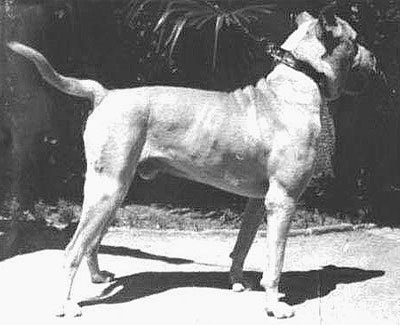
The Cordoba Fighting Dog originated in Córdoba, Argentina. It was noted for its willingness to fight to the death, and its high pain tolerance. The breed had such strong aggression toward other dogs that the males and females would rather fight than mate. In addition, many members of this breed died in the dog fighting pits, contributing to the breed’s extinction.
The Dogo Argentino is directly derived from this breed. In the 1920s, breeders developed the Dogo by crossing the Cordoba Fighting Dog with other breeds such as the Great Dane, Great Pyrenees, English Bulldog, Bull Terrier and Dogue de Bordeaux.
Norfolk Spaniel
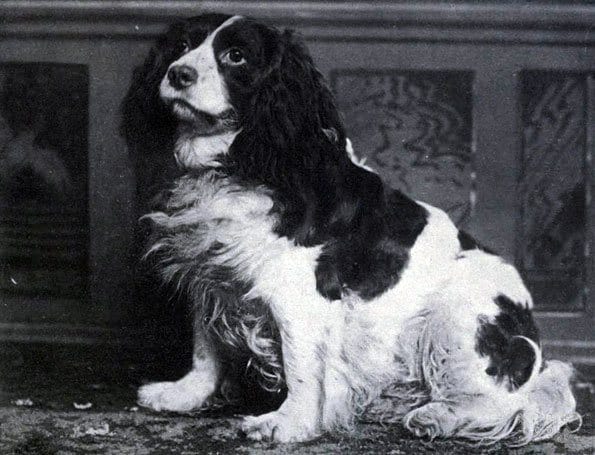
Norfolk Spaniel: Norfolk Spaniels, also known as Shropshire Spaniels, ceased to exist after 1903 when The Kennel Club lumped them in with the newly created English Springer Spaniel breed. The photo shows ‘Dash II’ a Norfolk Spaniel that took second place at the Westminster Kennel Club Dog Show in 1886.
St. John’s Water Dog
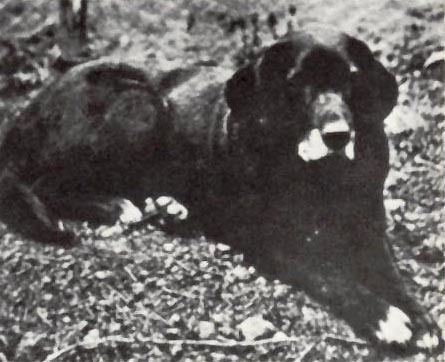
The St. John’s water dog, also known as the St. John’s dog or the lesser Newfoundland, was a landrace (a dog bred for a purpose, not pedigree or appearance) of domestic dog from Newfoundland. Little is known of the types that went into its genetic makeup, although it was probably a random-bred mix of old English, Irish and Portuguese working dogs. The number of St. John’s water dogs started declining by the start of the 20th century. By the early 1980s, the variety was extinct.
The St. John’s water dog was the ancestor of the modern retrievers, including the Flat Coated Retriever, the Chesapeake Bay Retriever, the Golden Retriever, and the Labrador Retriever. The St. John’s dog was also an ancestor to the large and gentleNewfoundland dog, probably through breeding with Mastiffs brought to the island by the generations of Portuguese fishermen who had been fishing offshore since the 15th century.
During the 19th and early 20th centuries, St. John’s dogs were exported from Newfoundland to England. These dogs were cross bred with other dogs to create the retrievers.
Braque du Puy
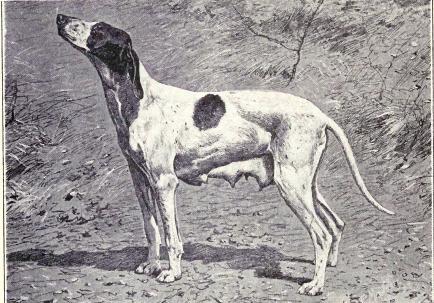
Braque du Puy: This French working dog was bred for hunting in the lowlands and known for being fast and flexible. Also known as the Dupuy Pointer.
English Water Spaniel
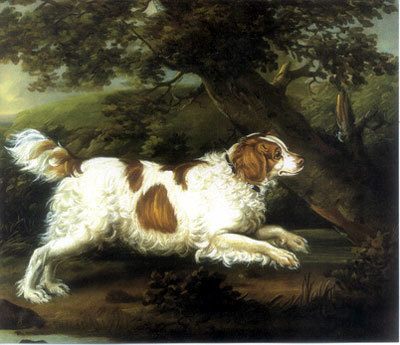
English Water Spaniel: Extinct since the early 1900’s, the English Water Spaniel was an adept waterfowl hunting dog. It has been said that these dogs could swim, duck, and dive as well as the waterfowl they were hunting.
Hawaiian Poi Dog
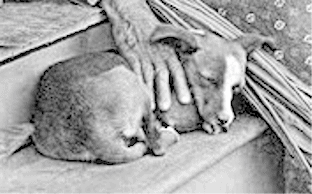
Hawaiian Poi Dog: The original Hawaiian Poi Dog got its name from poi, a Hawaiian staple food made from taro root. Poi was used to fatten the dogs for use as food because meat was too valuable to be used as dog food.
Old English Bulldog
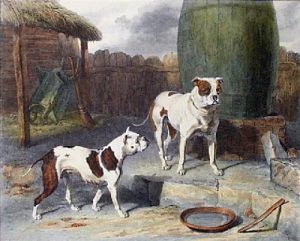
Old English Bulldog: Originally bred for the English blood sport of bull-baiting, the Old English Bulldog’s lower jaw stood significantly further out that the top jaw, resulting in a strong, vice-like gripping bite. The passing of the Cruelty to Animals Act in 1835 led to a decline in bull-baiting and dog fighting which ultimately led to the end of the breed.
Paisley Terrier
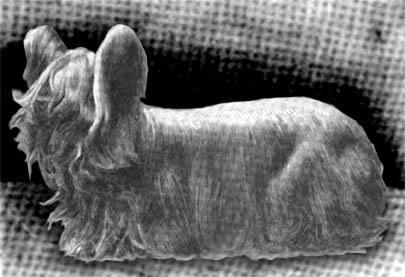
Paisley Terrier: Describing the Paisley Terrier in 1894, Rawdon Lee wrote that “though he can kill rats, and maybe other vermin, the Paisley Terrier is essentially a pet dog, and is usually kept as such.” The breed was primarily a pet, and it was also a popular showdog. The Paisley Terrier was the progenitor of today’s Yorkshire Terrier.
Russian Tracker
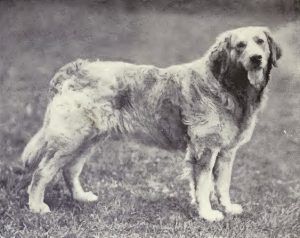
Russian Tracker: The Tracker was a large dog, sometimes weighing 100 pounds or more. Despite his massive size, he was fast and flexible enough to chase off wolves and other predators that threatened his sheep. He wore a thick, taffy colored double-coat that protected him from both the harsh weather and the savage wildlife. Aside from his physical prowess, this mountain dog was also blessed with exceptional intellect. He was so wise and capable (legend says) that he could keep himself and his flock alive and well for months on end with no human help.
Southern Hound
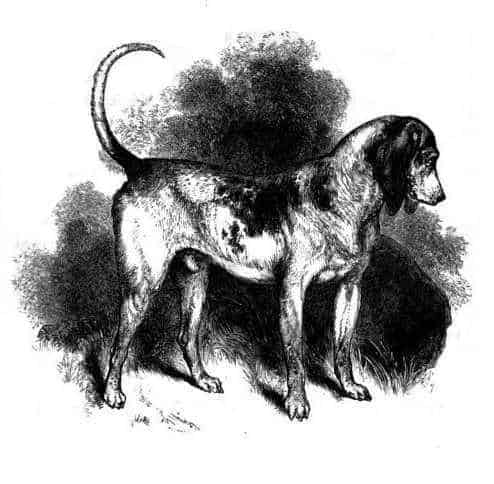
Southern Hound: The Southern Hound was a tall, heavy dog with a square head and long ears. It had a deep chest, a long bony body and a deep melodious voice. It was a slow dog, but with excellent scenting abilities and was employed to hunt deer and rabbits. Southern Hounds were eventually bred with Bloodhounds to create the modern breed.
Toy Bulldog
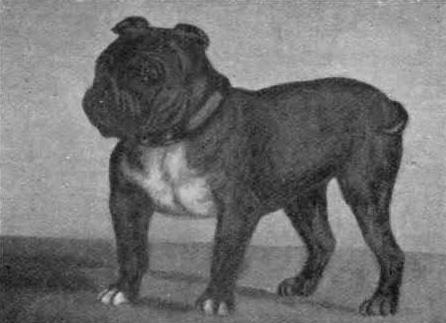
Toy Bulldog: The Toy Bulldog is an extinct dog breed that existed in England at 18th and early 19th centuries. They were created when breeders attempted to develop a new breed of miniature bulldogs, but they were never very healthy or fertile and the Toy Bulldog was never fully developed into a recognized breed.
Toy Trawler Spaniel
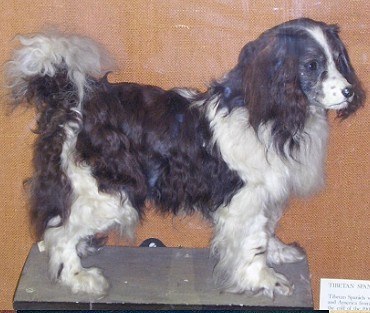
Toy Trawler Spaniel: On the verge of extinction by 1920, the Toy Trawler Spaniel is a direct descendent of the original King Charles Spaniel. Originally created for hunting, they were more often used as pets or as toy dogs. A preserved specimen is kept in the Natural History Museum in England.
Tweed Water Spaniel
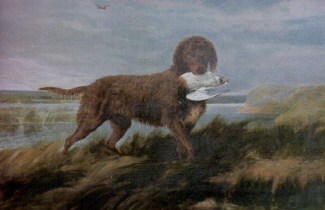
Tweed Water Spaniel: Extinct since the 19th century, the Tweed Water Spaniel is most known for being the predecessor of the modern Golden Retriever. They were described as generally brown, athletic water dogs, “certainly retrieverish, and not at all spanielly.”
Hare Indian Dog
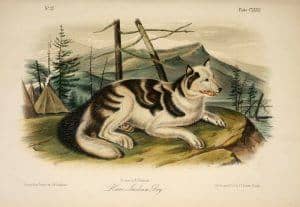
The Hare Indian dog is an extinct domesticated canid; possibly a breed of domestic dog, coydog, or domesticated coyote; formerly found and originally bred in northern Canada by the Hare Indians for coursing. It had the speed and some characteristics of the coyote, but the domesticated temperament and other characteristics of a domestic dog. It gradually lost its usefulness as aboriginal hunting methods declined, and went extinct or lost its separate identity through interbreeding with dogs in the 19th century.
Tesem
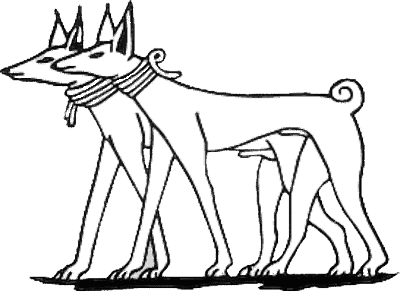
Tesem= tsm) was the Ancient Egyptian name for “hunting dog”. In popular literature it denotes the prick-eared, leggy dog with a curled tail from the early Egyptian age, but it was also used with reference to the lop-eared “saluki/sloughi” type; it was one of several types of dogs in Ancient Egypt, particularly the latter type had an appearance most similar to that of a greyhound.
One of the earliest known recordings of these dogs is the “Khufu dog” from the tomb of King Khufu, who reigned between 2609–2584 BC. This dog was named Akbaru, and was depicted wearing a collar. They continued to appear during the Middle Kingdom period (2055 BC and 1650 BC), but by the time of the New Kingdom (1550 BC – 1069 BC), they were replaced by dogs with hanging ears and a straight tail. These dogs were of the saluki/sloughi type.
The Pharaoh Hound of Malta and the Cirneco dell’Etna of Sicily were both popularly and controversially thought to be possible descendants of the Tesem.
Dogo Cubano

Also known as the Cuban Mastiff, Cuban Dogo and Cuban Dogge is an extinct dog breed from Cuba. It was of Bull Mastiff type used for dog fighting. The breed was introduced in Cuba to capture runaway slaves (cimarrones). After the abolition of slavery they ceased to exist in time.
The breed is considered extinct since the end of the 19th century, but there have been reports which state that although no pure Dogo Cubanos remain, the dogs used in today’s fighting pits in Cuba are descendants of the crossbreed between Pit Bulls, Cordoba Bulldogs and Dogo Argentinos and the few pure Dogo Cubanos that were remaining by the beginning of the 20th century. The modern descendant of this rare dog breed is much larger and stronger than the original and resembles the American Pit Bull Terrier.
Chien-gris
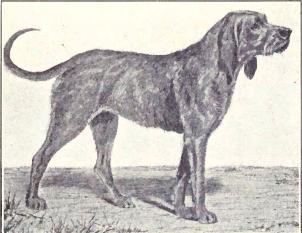
The Chien-gris aka Gris de Saint-Louis (Grey St. Louis Hound) was a breed of dog, now extinct, which originated in Medievaltimes. Like the Chien de Saint-Hubert it was a scenthound, and formed part of the royal packs of France, which were composed, from about 1250 till 1470, exclusively of hounds of this type.
Common in the 16th century, they were described as ‘gris’ (grey) on the back with forequarters and legs that were tan or red, some having near black hair on the back. They were rough haired, and were ancestors of the modern French rough-coated Griffon breeds.
Alpine Spaniel
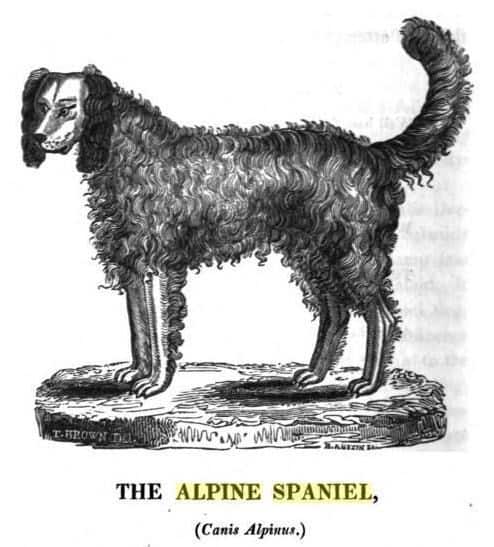
The Alpine Spaniel is an extinct breed of dog which was used in mountain rescues by the Augustinian Canons, who run hospices in the region around the Great St. Bernard Pass. The spaniel was a large dog notable for its thick curly coat. One of the most famous specimens of the Alpine Spaniel is Barry, however his preserved body has been modified on more than one occasion to fit with descriptions of the extinct breed from earlier time periods.
Due to the conditions in the Alps, and a series of accidents, extinction was discussed as a possibility by authors during the 1830s, and at some point prior to 1847 the entire breed was reduced to a single example due to disease. Evidence held at the Natural History Museum in Bern show that two distinct breeds of dog were being used in the area during this time period. The breed is thought to be the predecessor to the modern St. Bernard and the Clumber Spaniel.
Alaunt
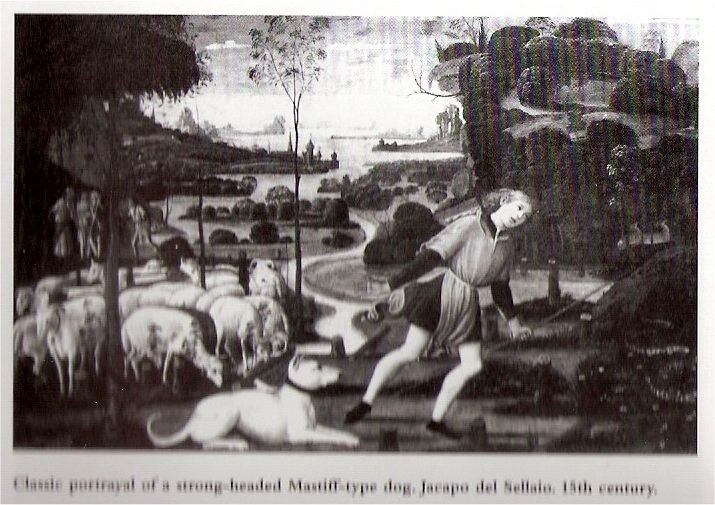
The Alaunt is an extinct breed of dogthat existed in central Asia and Europe from ancient times through the 17th century. A number of modern dog breeds are believed to be descended from the Alaunt.
The original Alaunt breed came in three distinct pheno-types: Alaunt Veantre, Alaunt Boucherie and the Alaunt Gentile. They all were large, short coated dogs of varying head-types. The former two resembled the molosser type dogs much like the present-day Dogo Argentino or like the Caucasian Shepherd Dog except with short hair and a mesocephalic head which made them excellent large-game hunters. The Alaunt is regarded by some cynologists as the ancestor to the original bulldog breeds.
Songs about Dogs you HAVE to hear!
Want more? Test your dog knowledge! Can you name these famous songs about dogs? Click here.



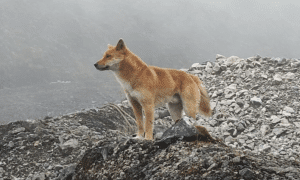

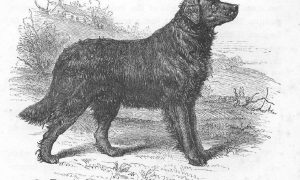

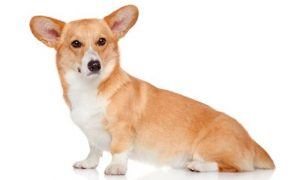












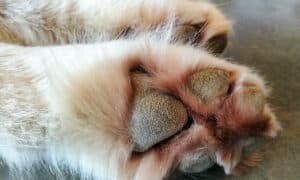




Wow those dogs are so cute to be mostly extinct but how did they get extint
[…] One of the earliest Tesem dogs was a royal dog named Akbaru, who was buried with the king Khufu who reigned between 2609–2584 […]
baudin
says:this is not to say but with regard to the blue paul terrier this name and one of the nicknames of the bull terrier like the English White Terrier and one of the nicknames of the English terrier and the Cordoba Fighting Dog and the Bullenbeisser are nicknames of the current mastiff and the southern hound and one of the nicknames of the hound saint-hubert and the basset hound and the little brother of the hound so it would be logical to call it also st-hubert toy, the bull-terrier can also be called the bulldog- terrier, bandog terrier, mastiff terrier seen as the bullmastiff, bulldog, bandog or any name that this breed carries and that he and cross with a burrow does not give it any names and or nicknames and say terrier after no? do not we say Dogo Brazilian or bullboxer when it is a cross between a mastiff aka the boxer and a bull terrier? and why we say for a staffodshire crossed pitbull that it is a bully american while he and also agile and many other common points decidedly the canine world and full of scam signed a defender of bull terrier and these Ancestors that many people will never want to recognize in natural on this a good site but that recovers half of real information like some other site
Weird & Wacky Dog Behaviors – Explained! – The Dogington Post
says:[…] In the meantime, since you clearly love learning about dogs and some of their odd ancestral behaviors, check out these 25 ancient dog breeds that may have contributed to your dog’s wacky habits before going extinct! […]